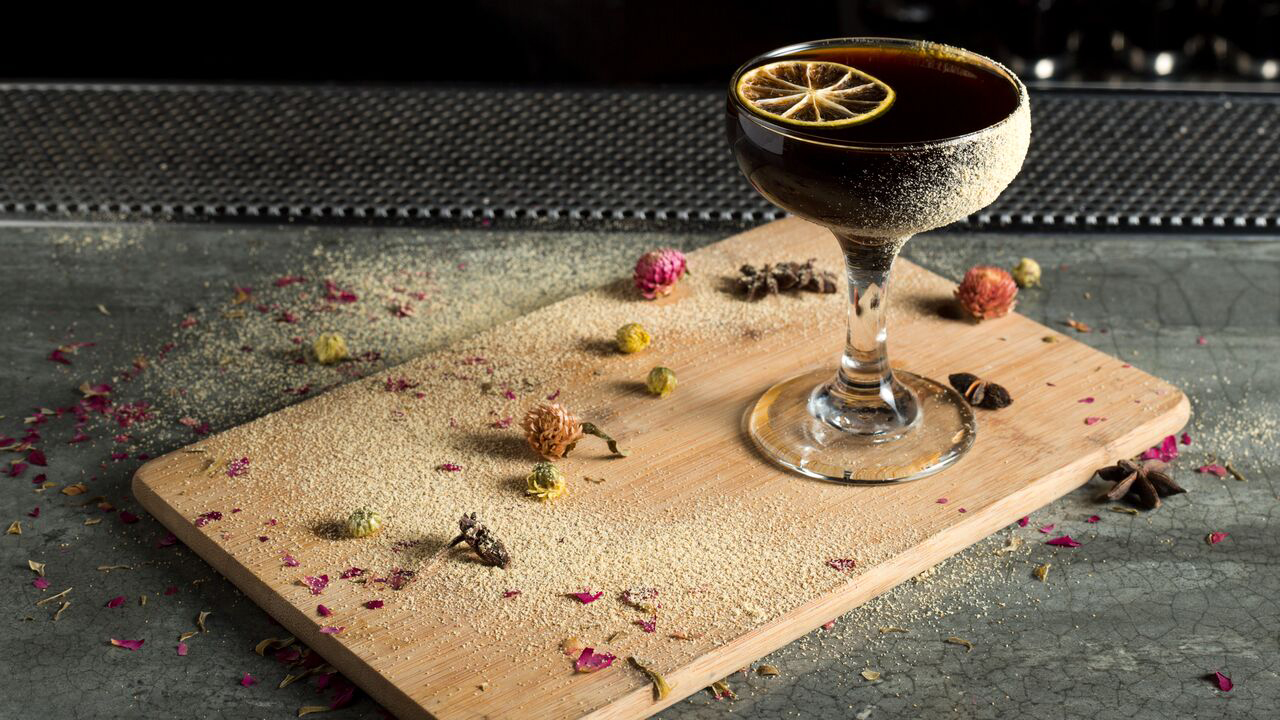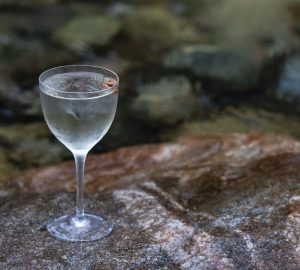While black cocktails regularly make an appearance around Halloween, they’ve recently been slinking out of the shadows. Paul Mathew looks into their dark depths.
There is something captivating about a black drink. They are mysterious, elegant and instantly photogenic, eye-catching amongst the brown of barrel-aged spirits, the red of berries or the greens of mint and limes. In this age of social media, black drinks are beguiling, even more so when their colour is emphasised with a high contrast garnish or foam, where the black serves as a perfect backdrop. It is inscrutable, giving you no tell-tale hints as to the flavour of the drink.
Black drinks are relatively unusual for a reason though. It’s not a colour possessed by many products on the back bar, so it takes some thought and planning to get there. Stout or coffee does the trick, but neither are a deep, dark black, so bartenders have been reaching for a variety of solutions to really draw the eye. The first of these is to mix dark on dark to create something that’s more than the sum of those parts. Take the Hard Wired Cherry Cola from the Blind Pig listed here – a combination of dark reds and browns that get satisfyingly close (the Mr Black Cold Press Coffee Liqueur helps, providing a fantastically dark ingredient with coffee alone).
Secondly, you can stretch to slightly more unusual ingredients from the kitchen such as squid ink, as I did when making my Night Market Manhattan (bourbon, rye, sweet vermouth, maraschino, aromatic bitters and squid ink) and as you’ll find here in Julian de Feral’s squid ink Nero Negroni, or with the burnt tamarind in Nutmeg & Clove’s Opium Wars. Finally, you can seek out dark matter from unfamiliar sources. Commercial food colourings and malt extracts used by brewers to adjust the colour of their stouts and porters can be used in minute quantities to make almost-black batches or syrups, while activated charcoal – found at chemists and some health food shops in the UK – has been cropping up with increasing regularity in black drinks.
It’s at this point that I need to urge a little caution. In our never-ending quest for novelty and points of difference, perhaps we push the envelope of what is wise. Activated charcoal is feted by some as a “cleanser” and can be used medically as a detoxifying agent, which has led some to add it to drinks for both colour and its perceived “healthy” nature.
My general rule: if you don’t find it in the food section of the grocery store, maybe think twice before you just chuck it in a drink
“Activated charcoal is adsorptive. It’s used for overdoses, alcohol poisoning and all sorts of medical procedures,” says Avery Glasser of Bittermens. “That in itself isn’t damning. I mean, water is used in all sorts of medical procedures, right? But activated charcoal is also something that you need to be wary of because of what it does: it essentially binds to and reduces the effectiveness of a whole range of pharmaceuticals. Taken before the medicine has fully worked into your blood stream, activated charcoal can reduce the efficacy of both tricyclic antidepressants and birth control pills.”
Like any ingredient where there is an element of risk, exercise caution, whether that’s coumarin levels from tonka beans and cassia bark, or quinine from cinchona. “My general rule: if you don’t find it in the food section of the grocery store, maybe think twice before you just chuck it in a drink,” Glasser concludes. Risks aside, charcoal can also add an unpleasantly gritty texture to a drink, and where’s the fun in that?
Black drinks have been popping up around the world recently due to their mysteriousness and elegance, but don’t take this as endorsement. They have become a fashion and with it, there’s a risk that a drink becomes black for the sake of the colour alone. As with any conceptual drink, it has to taste great, arguably even more so if it’s black, as you’re immediately challenging a guest’s assumptions about flavour.
Tasting great is what the recipes I’ve included are all about – take away the colour and they’re all delicious drinks. In that respect, colour is just another garnish. You can’t decorate a bad drink and make it taste great, but you can make a good drink just that little bit more photogenic with a dash of ingenuity.
Recipe (Click to view)
Heart of Darkness by Courtney Colarik
Recipe (Click to view)
Hard Wired Cherry Cola by Blind Pig, London
Recipe (Click to view)
Nero Negroni by Julian de Feral
Recipe (Click to view)
Opium Wars by Nutmeg & Clove, Singapore
This article was first published in Issue 47 of DRiNK Magazine.








